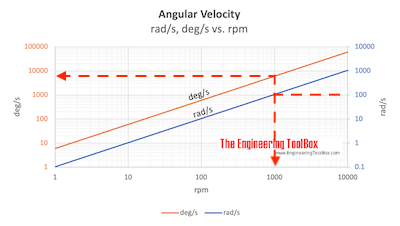

High-performance drives (used in fileservers and enthusiast-gaming PCs) rotate at 10,000 or 15,000 rpm (160 or 250 Hz), usually with higher-level SATA, SCSI or Fibre Channel interfaces and smaller platters to allow these higher speeds, the reduction in storage capacity and ultimate outer-edge speed paying off in much quicker access time and average transfer speed thanks to the high spin rate. Computer hard drives typically rotate at 5,400 or 7,200 rpm (90 or 120 Hz), the most common speeds for the ATA or SATA-based drives in consumer models.A piston aircraft engine typically rotates at a rate between 2,000 and 3,000 rpm (30–50 Hz).Thus an eight-cylinder engine turning 300 times per second will have an exhaust note of 1,200 Hz. The exhaust note of V8, V10, and V12 F1 cars has a much higher pitch than an I4 engine, because each of the cylinders of a four-stroke engine fires once for every two revolutions of the crankshaft. Modern automobile engines are typically operated around 2,000–3,000 rpm (33–50 Hz) when cruising, with a minimum (idle) speed around 750–900 rpm (12.5–15 Hz), and an upper limit anywhere from 4500 to 10,000 rpm (75–166 Hz) for a road car, very rarely reaching up to 12,000 rpm for certain cars (such as the GMA T.50), or 20,000 rpm for racing engines such as those in Formula 1 cars (during the 2006 season, with the 2.4 L N/A V8 engine configuration limited to 15,000 rpm, with the 1.6 L V6 turbo- hybrid engine configuration).A power generation turbine ( with a two-pole alternator) rotates at 3000 rpm (50 Hz) or 3600 rpm (60 Hz), depending on country – see AC power plugs and sockets.


DVD players also usually read discs at a constant linear rate.Audio CD players read their discs at a precise, constant rate (4.3218 Mbit/s of raw physical data for 1.4112 Mbit/s (176.4 kB/s) of usable audio data) and thus must vary the disc's rotational speed from 8 Hz (480 rpm) when reading at the innermost edge, to 3.5 Hz (210 rpm) at the outer edge.The second hand of a conventional analog clock rotates at 1 rpm.Modern air turbine dental drills can rotate at up to 800,000 rpm (13.3 kHz).Phonograph (gramophone) records, for example, typically rotate steadily at 16 + 2⁄ 3, 33 + 1⁄ 3, 45 or 78 rpm (0.28, 0.55, 0.75, or 1.3 Hz respectively). On many kinds of disc recording media, the rotational speed of the medium under the read head is a standard given in rpm.If it instead is considered a unit of angular velocity and the word "revolution" is considered to mean 2 π radians, then 1 rpm = 2 π / 60 rad/s. If the non-SI unit rpm is considered a unit of frequency, then 1 rpm = 1 / 60 Hz. Thus a disc rotating at 60 rpm is said to be rotating at either 2 π rad/s or 1 Hz, where the former measures the angular velocity and the latter reflects the number of revolutions per second. In relation to the base unit of => (hertz), 1 Revolutions Per Second (rps) is equal to 1 hertz, while 1 Radian Per Second (rad/s) = 0.159154943 hertz.
Rad to rpm how to#
How to convert Revolutions Per Second to Radian Per Second (rps to rad/s)?ġ x 6.2831853108075 rad/s = 6.2831853108075 Radian Per Second.Īlways check the results rounding errors may occur. The base unit for frequency is hertz (Non-SI/Derived Unit) Conversion: Revolutions Per Second to Radian Per Second


 0 kommentar(er)
0 kommentar(er)
